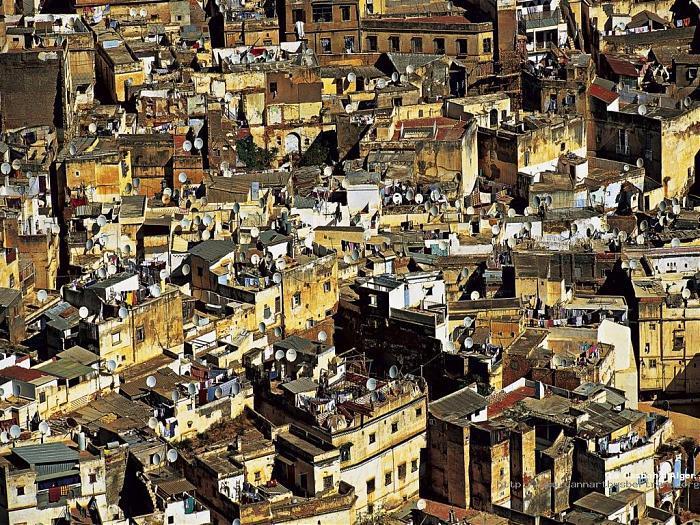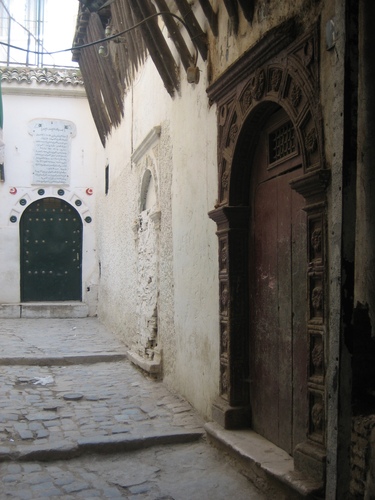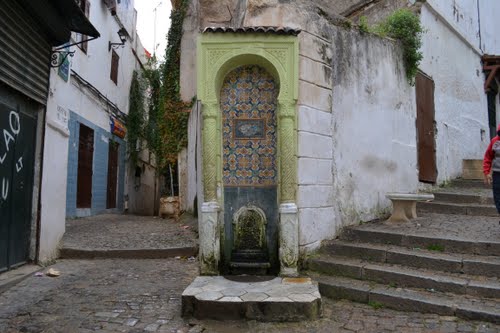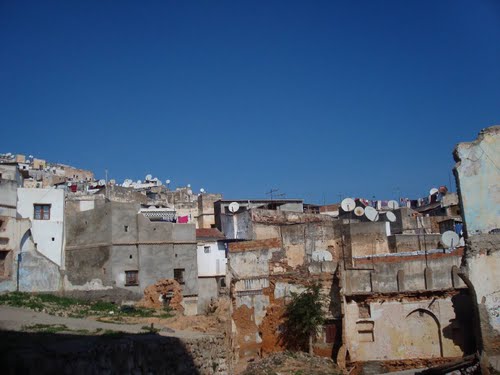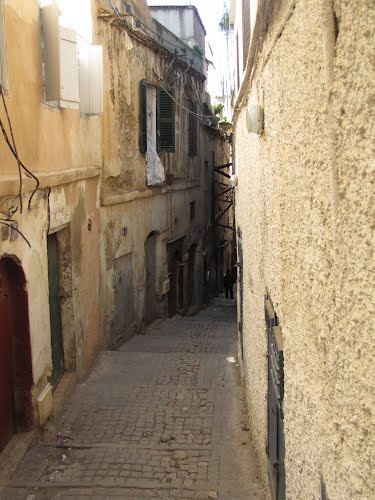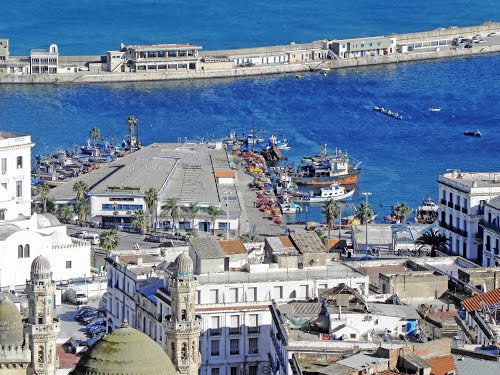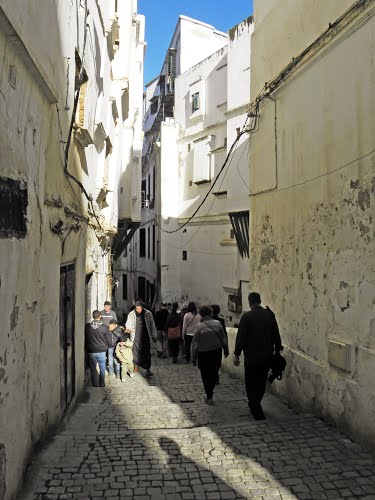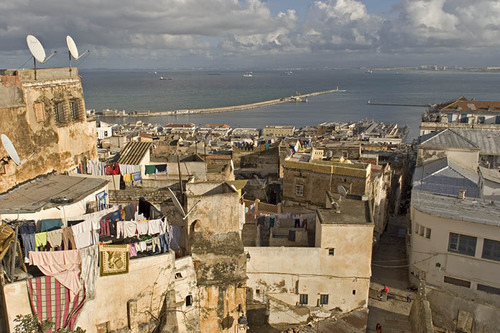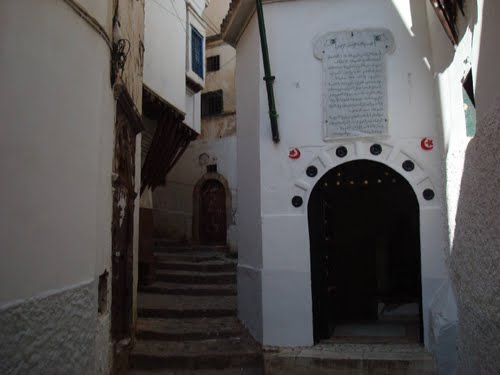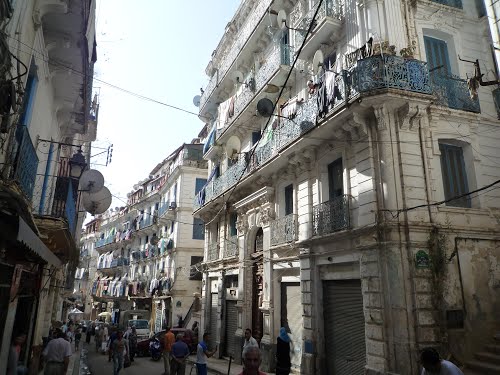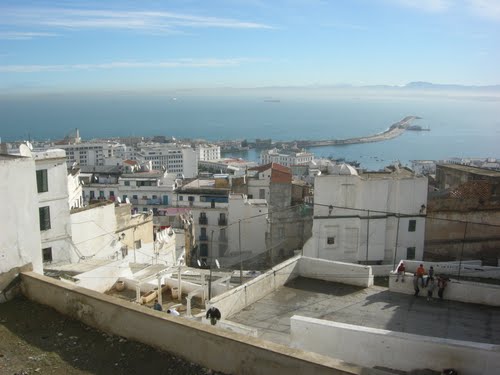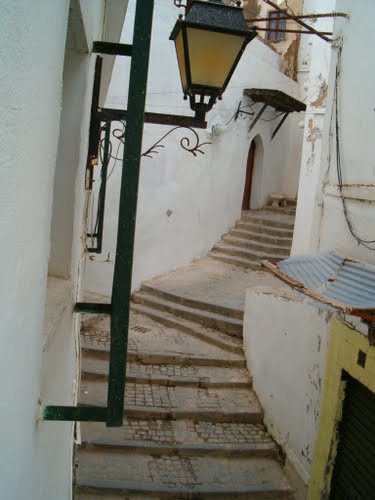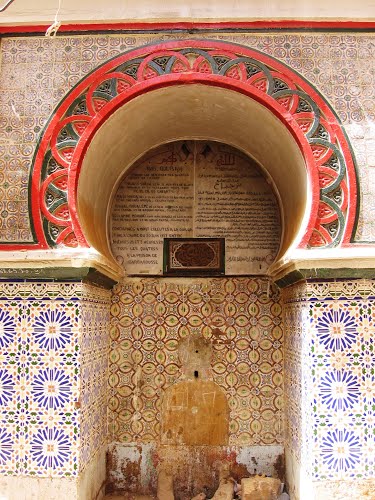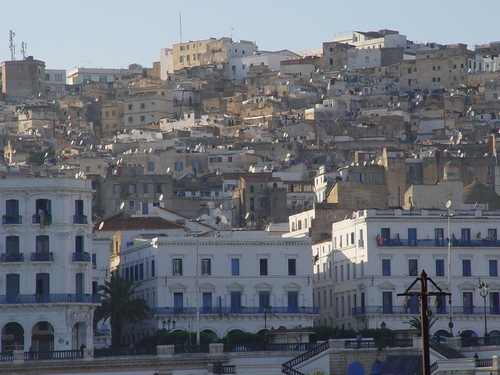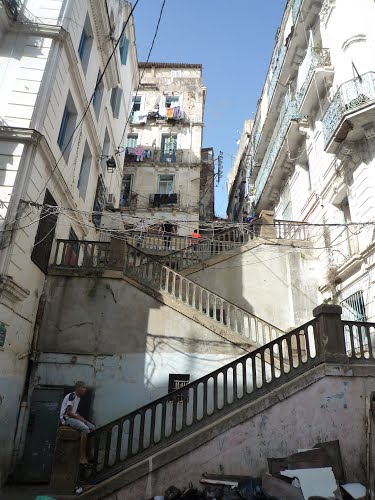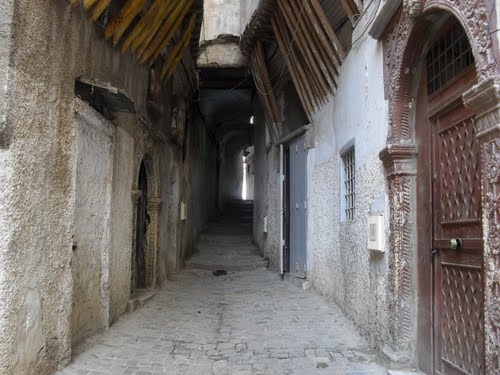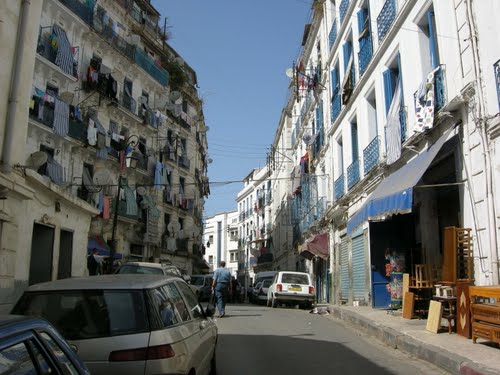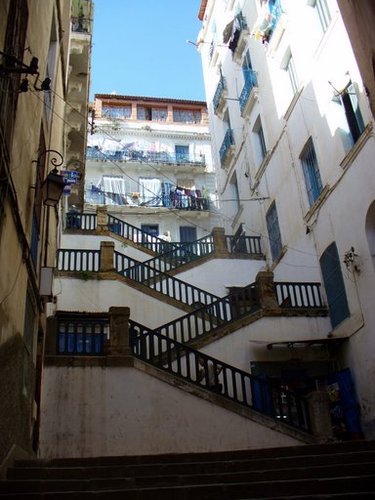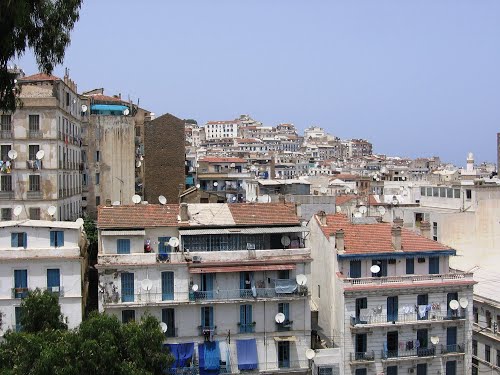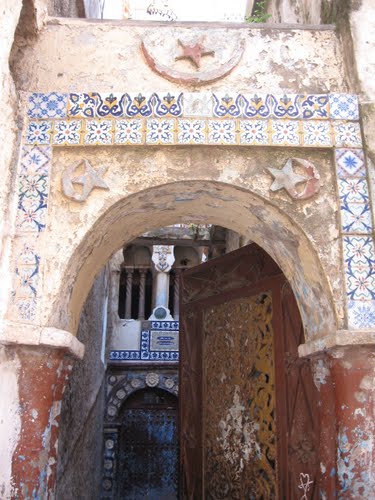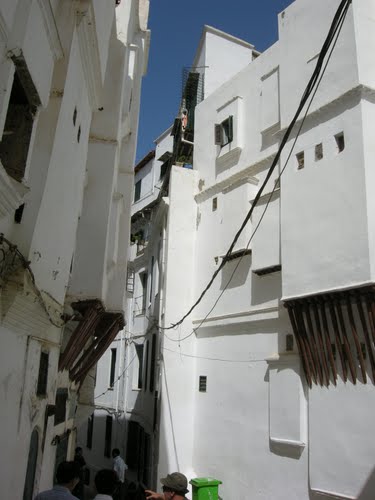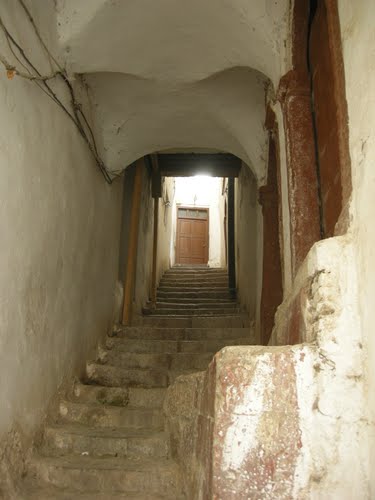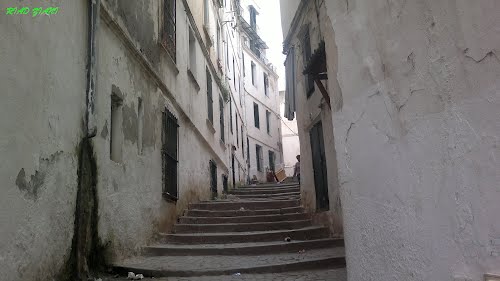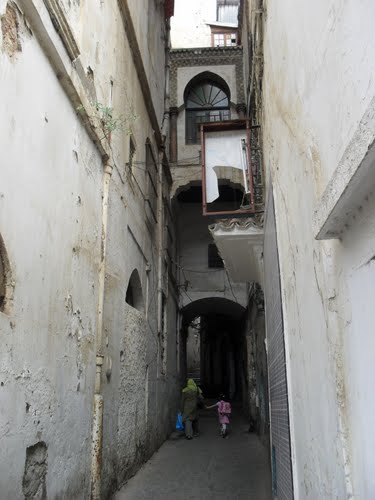The Casbah is specifically the citadel of Algiers in Algeria and the traditional quarter clustered around it. More generally, a kasbah is the walled citadel of many North African cities and towns. The name made its way into English from French in the late 19th century, and often is spelled "kasbah," but also "casbah."
History
The Casbah of Algiers is founded on the ruins of old Icosium. It was a mid-sized city which, built on a hill, goes down towards the sea, divided in two: the High city and the Low city. One finds there masonries and mosques of the 17th century: Ketchaoua mosque (built in 1794 by the Dey Baba Hassan) flanked of two minarets, mosque el Djedid (1660, at the time of Turkish regency) with its large finished ovoid cupola points some and its four coupolettes, mosque El Kebir (oldest of the mosques, it was built by Almoravid ruler Yusuf ibn Tashfin and rebuilt later in 1794), mosque Ali Betchnin (Rais, 1623), Dar Aziza, palate of Jenina. The Palace was built in 1791 to house the Pasha, who lived there for eight years.
In 1839, the French governor moved into the palace. In 1860, Napoleon III and Eugenie de Montijo visited. The Casbah played a central role during the Algerian struggle for independence (1954–1962). The Casbah was the epicenter of the insurgency planning of the National Liberation Front and gave them a safe haven to plan and execute attacks against French citizens and law enforcement agents in Algeria at the time. In order to counter their efforts, the French had to focus specifically on the Casbah.
Current condition
As Reuters reported in August 2008, the Casbah is in a state of neglect and certain areas are threatening collapse.
Algerian authorities list age, neglect and overpopulation as the principal contributors to the degeneration of this historic neighborhood. Overpopulation makes the problem especially difficult to solve because of the effort it would take to relocate everyone living there. Estimates range from 40,000–70,000 people, though it is difficult to track because of the number of squatters in vacant buildings. One reason that the government wants to improve the condition of the Casbah is that it is a potential hideout for criminals and terrorists. In the late 1950s and during the civil insurrection and liberation struggle against French colonial rule it was the hideout for freedom fighters.



